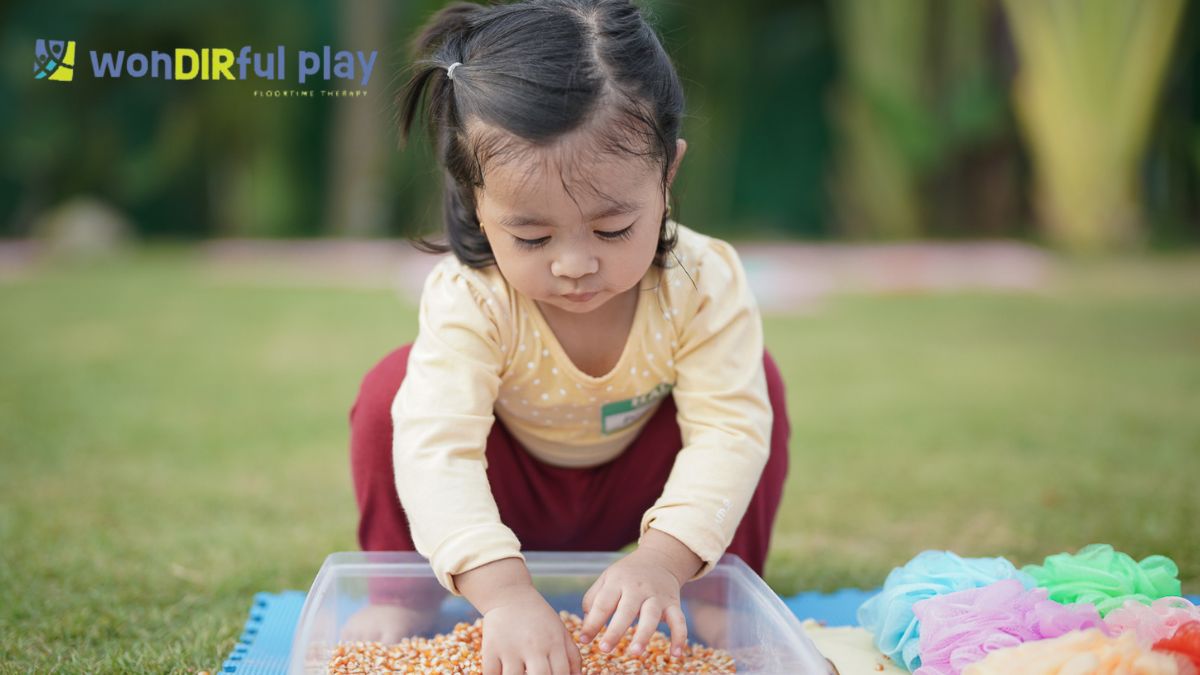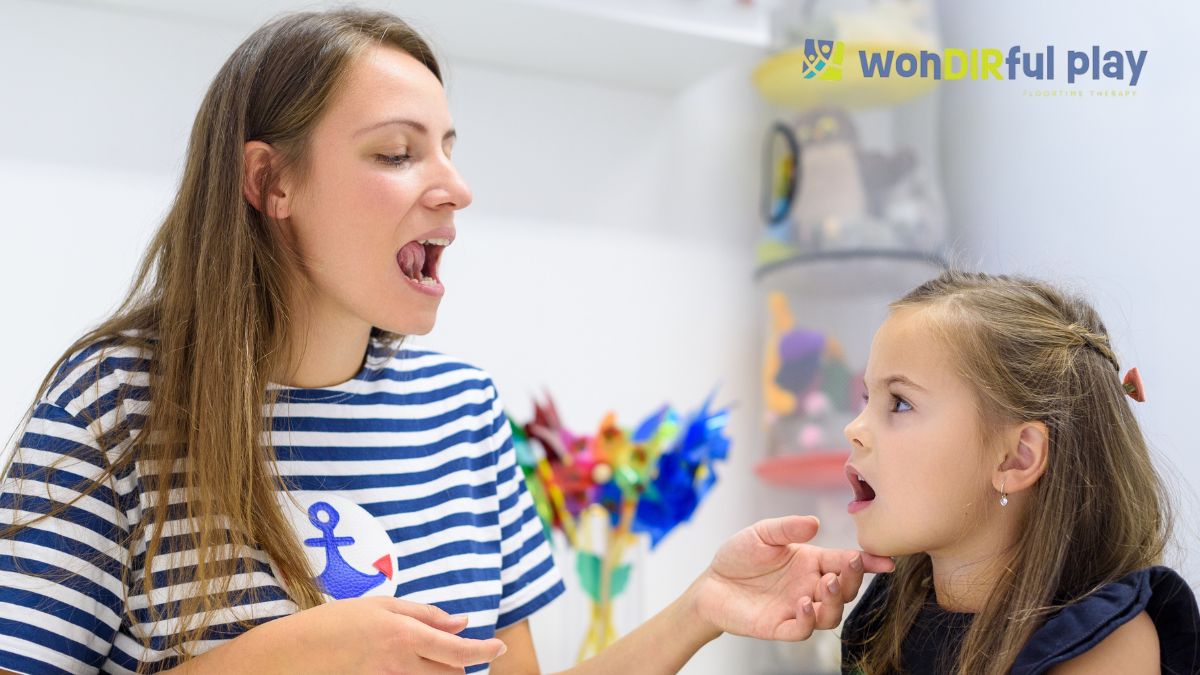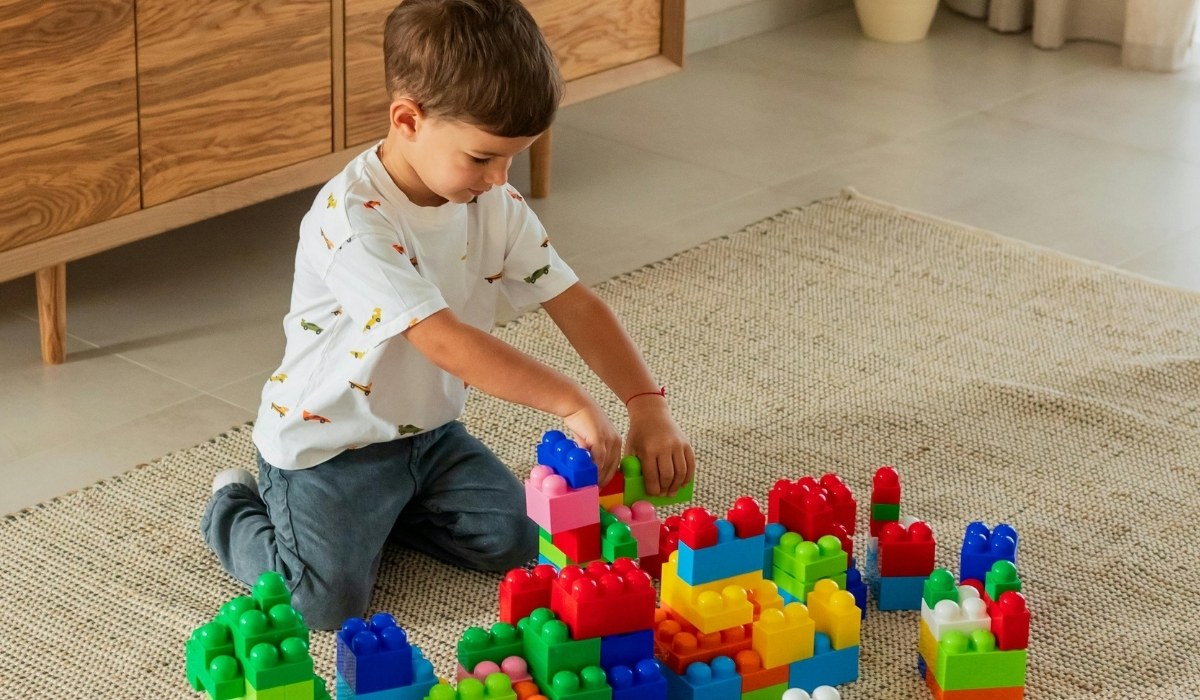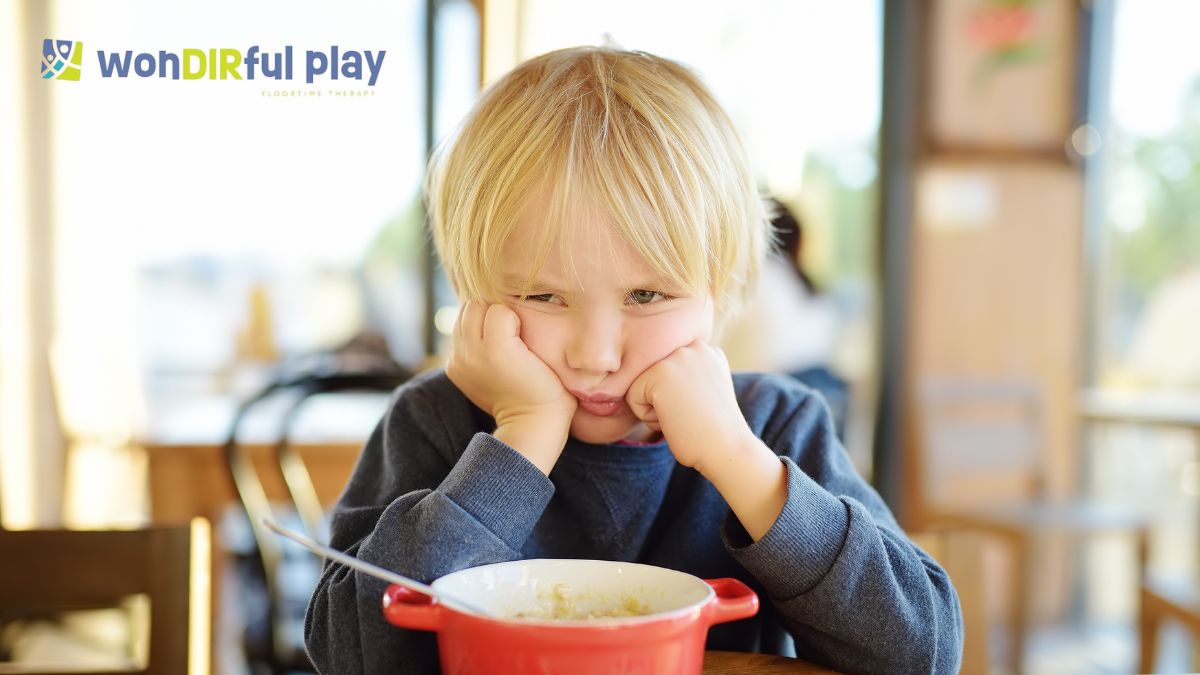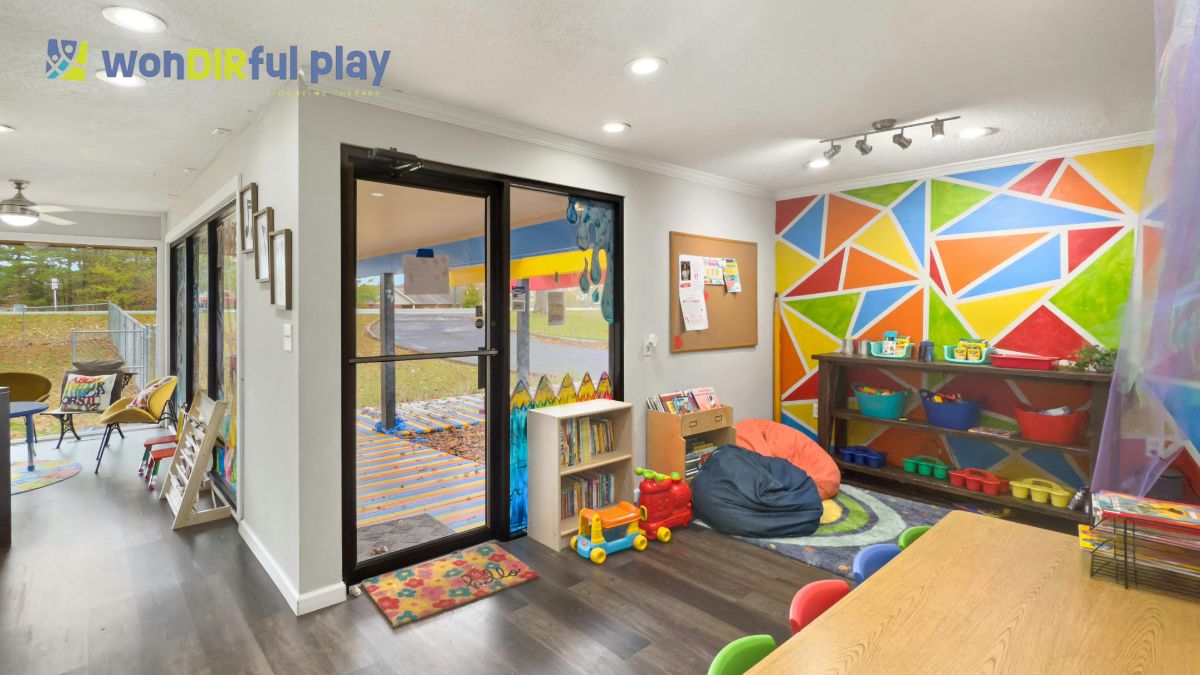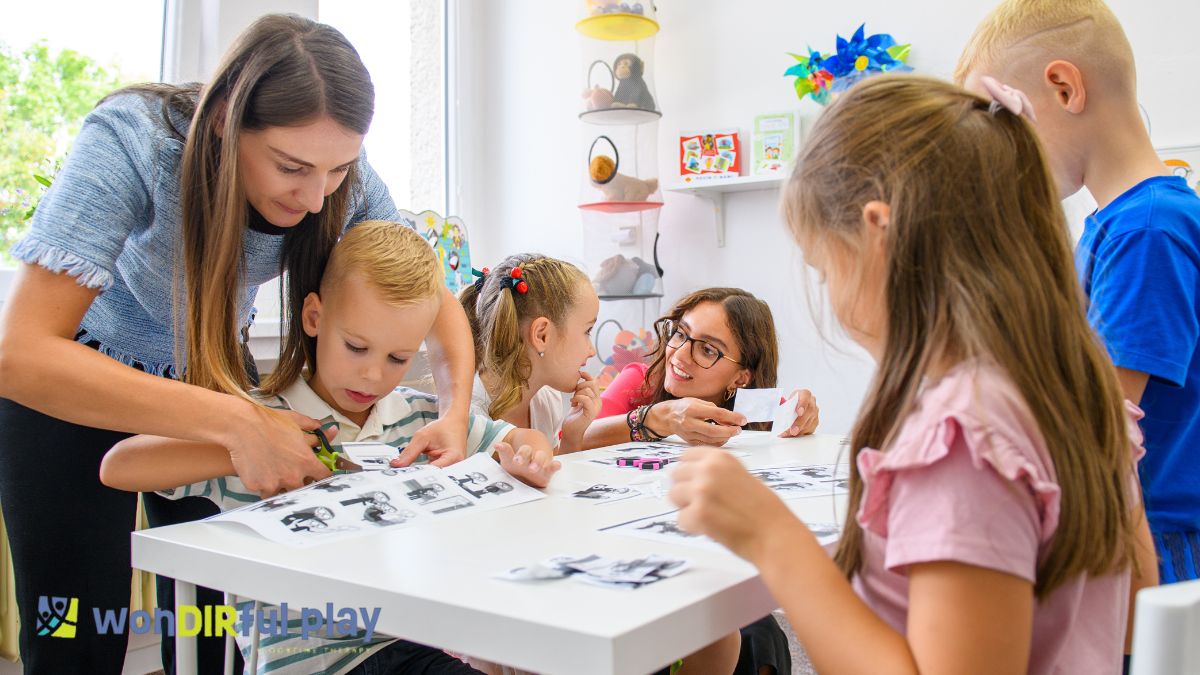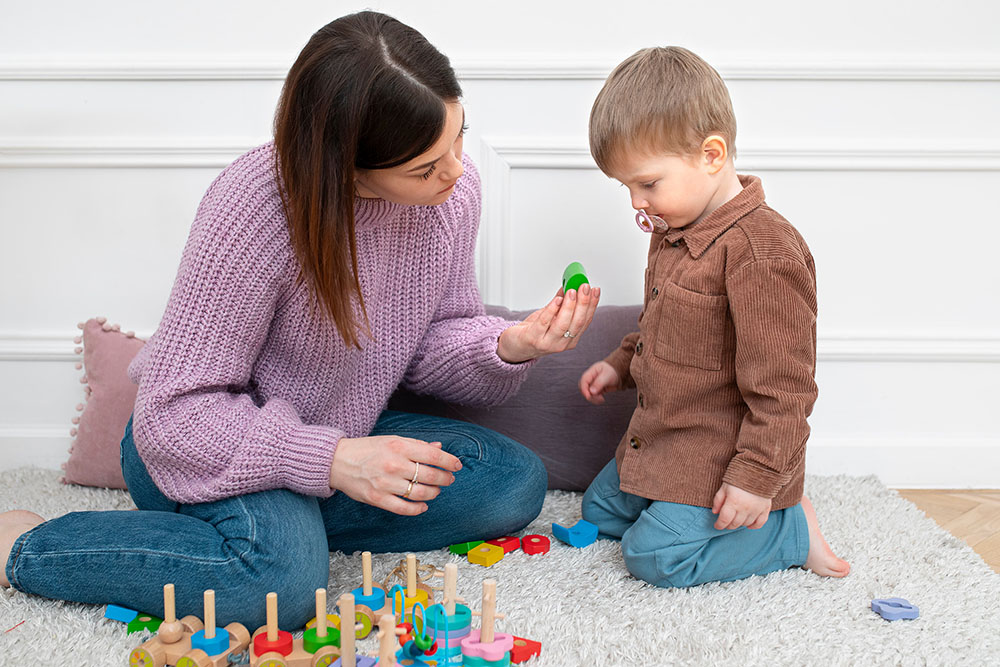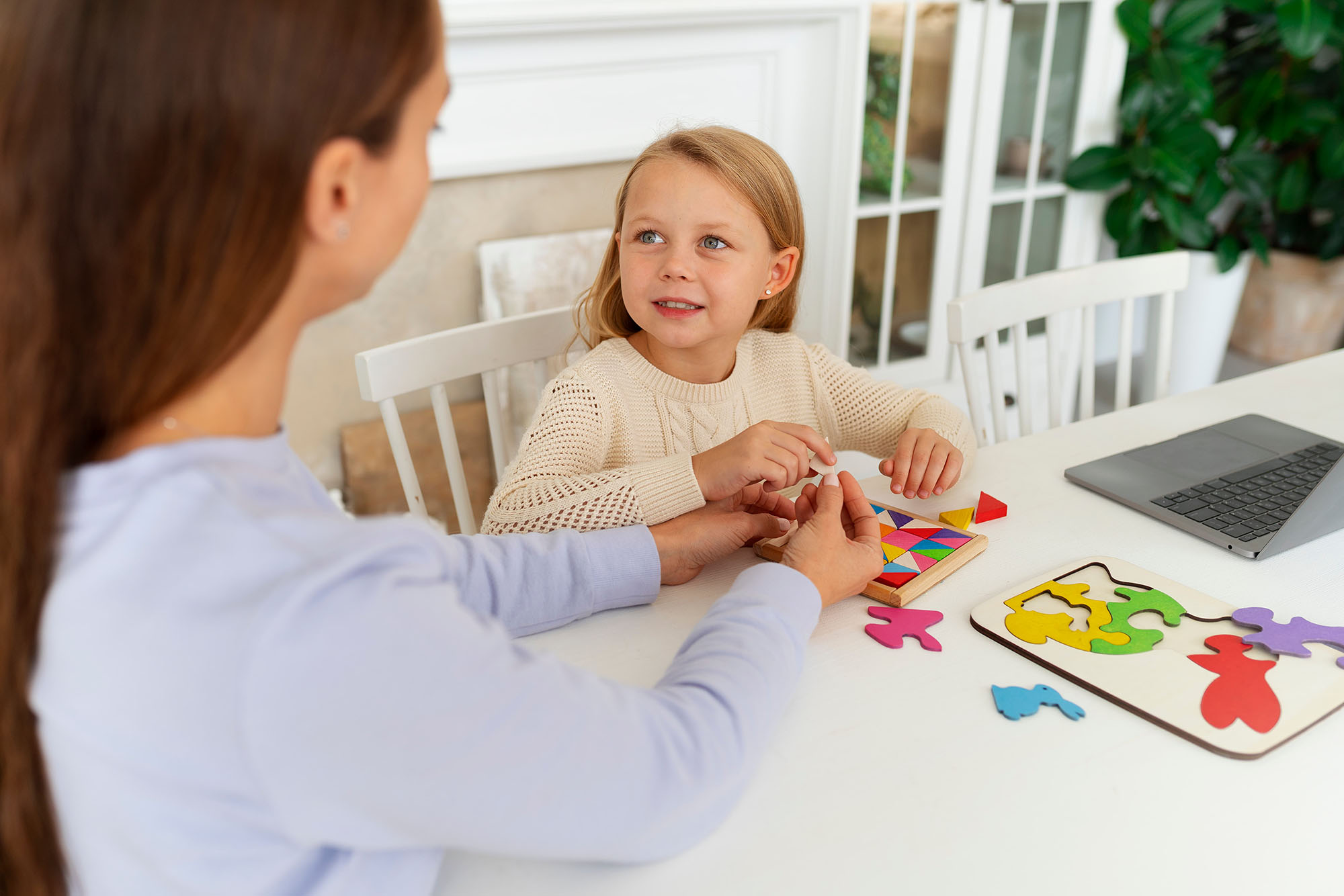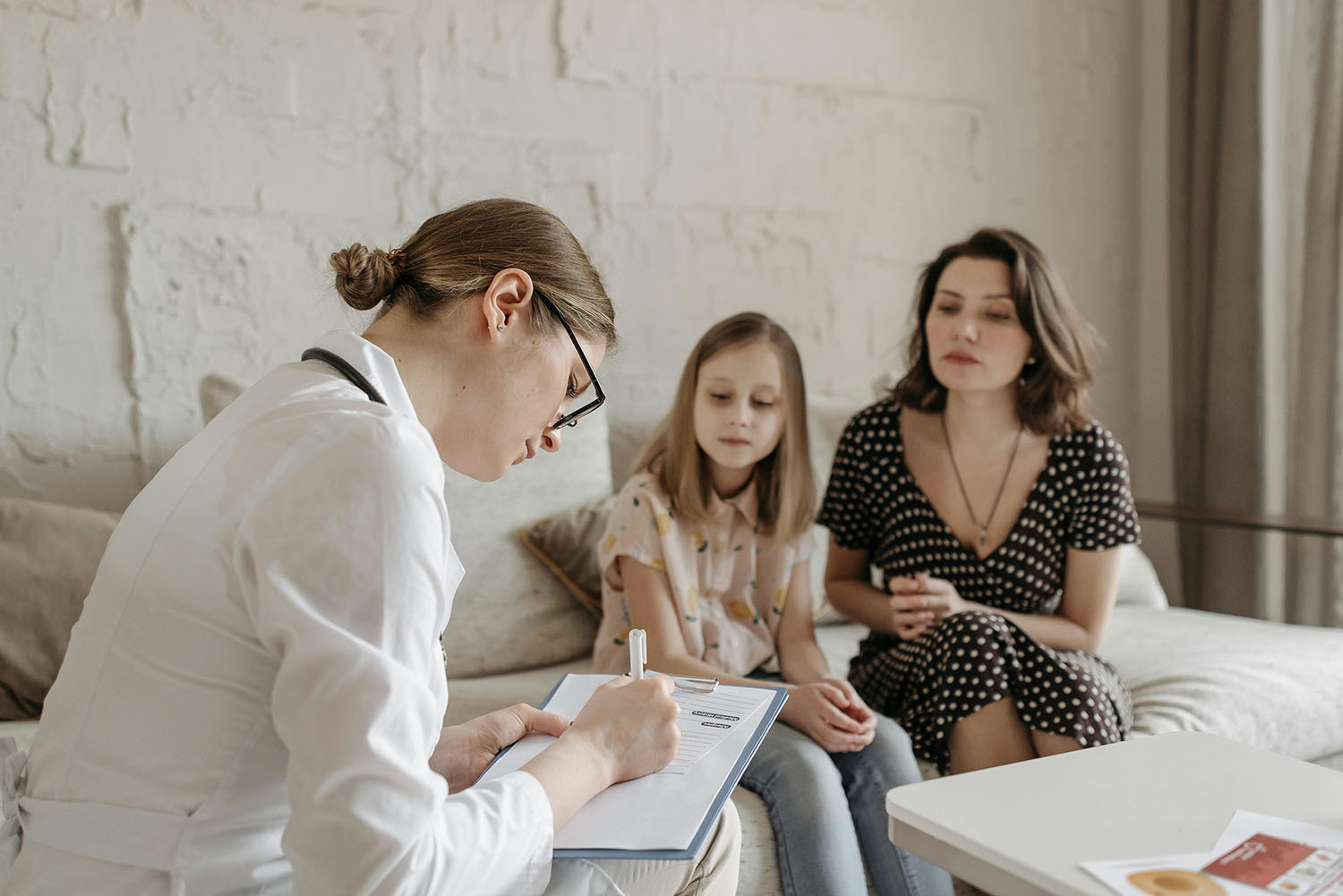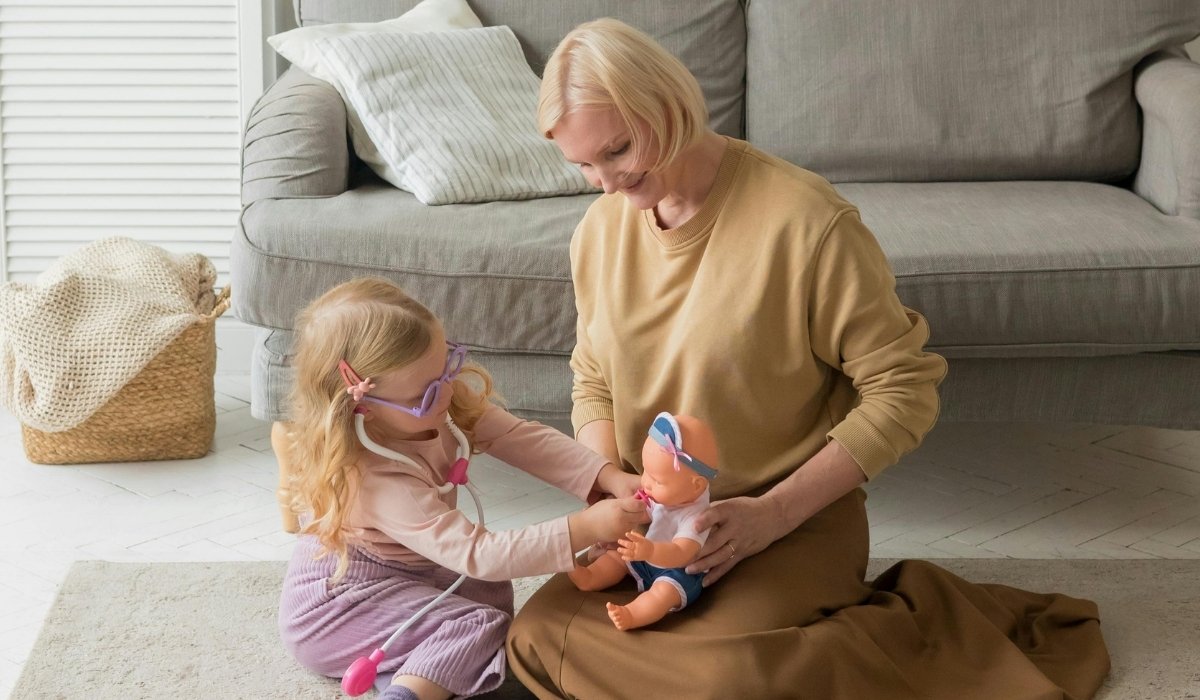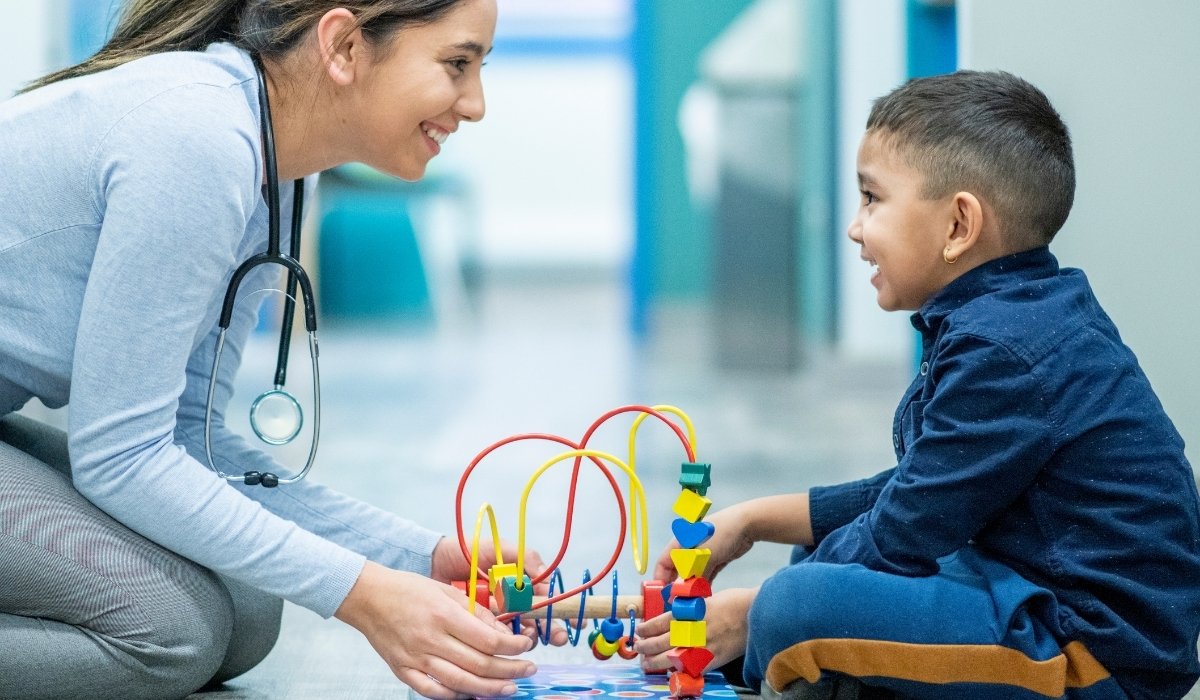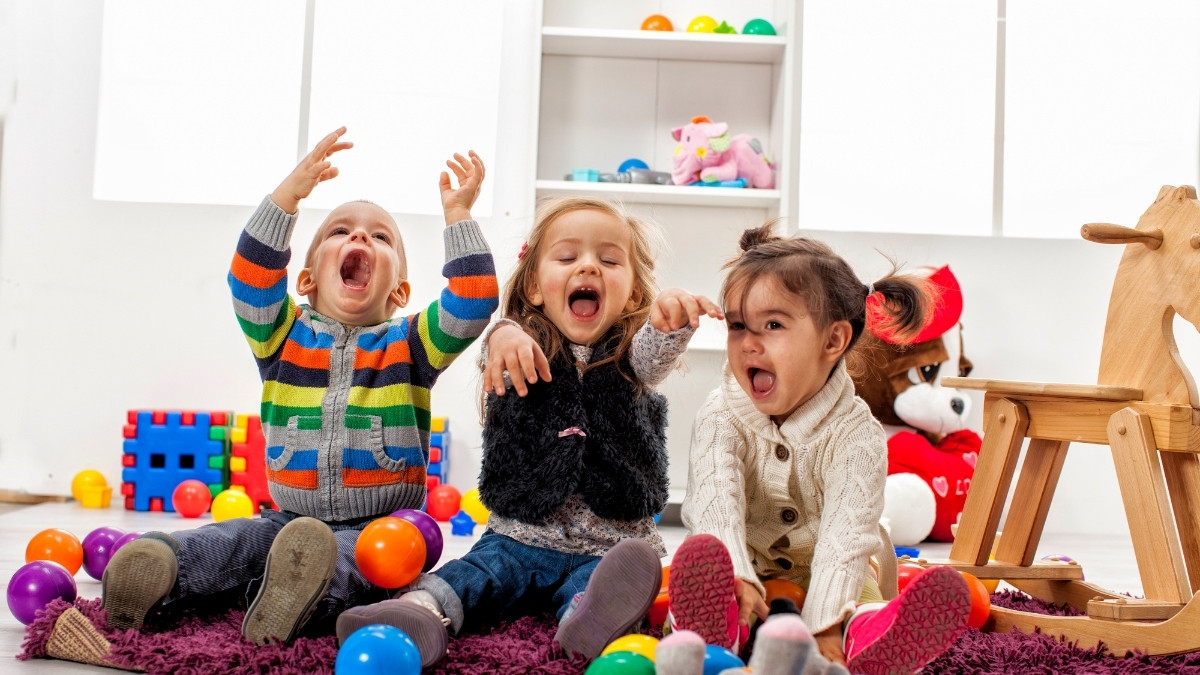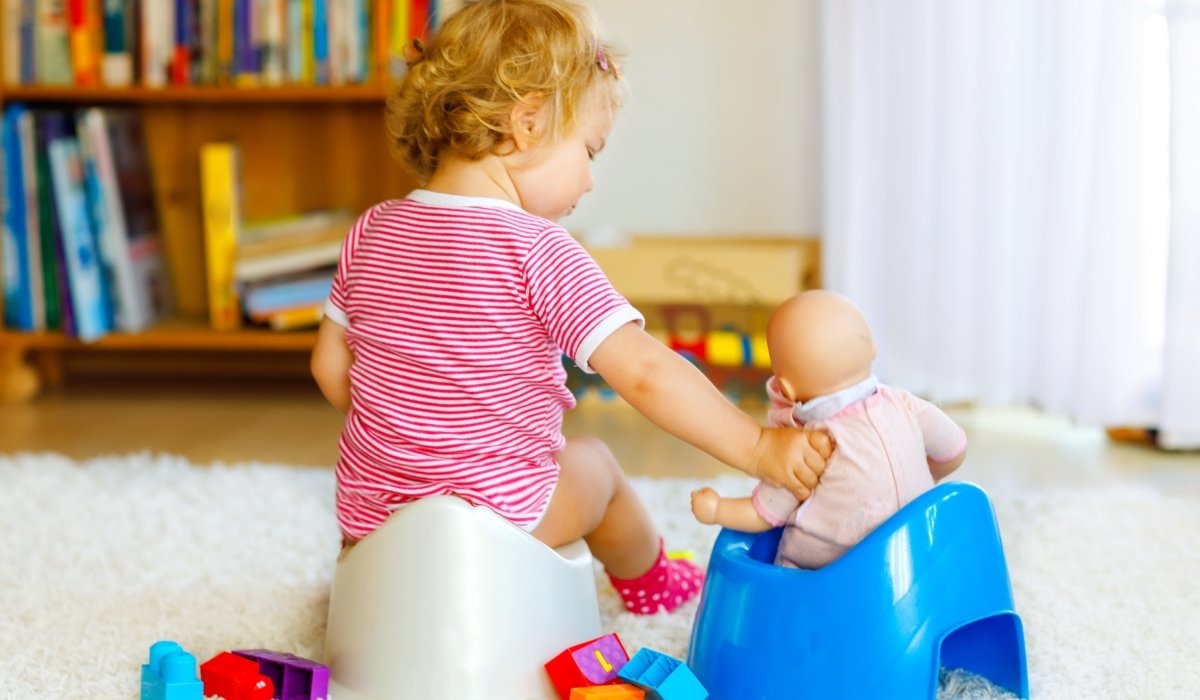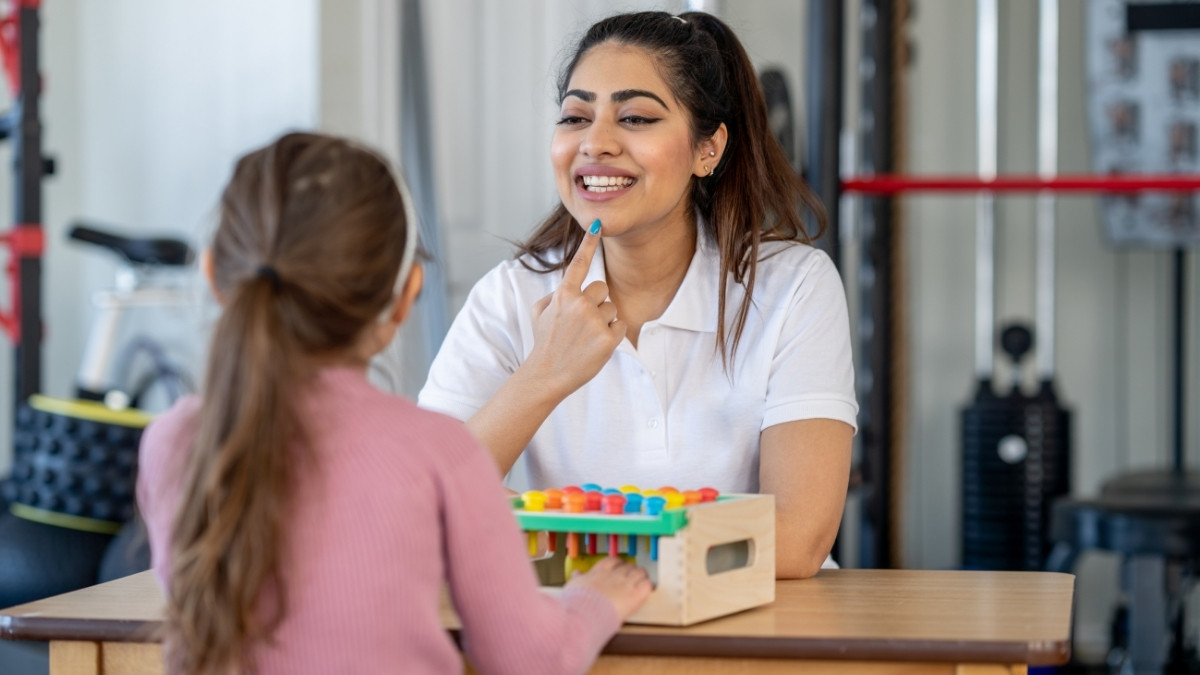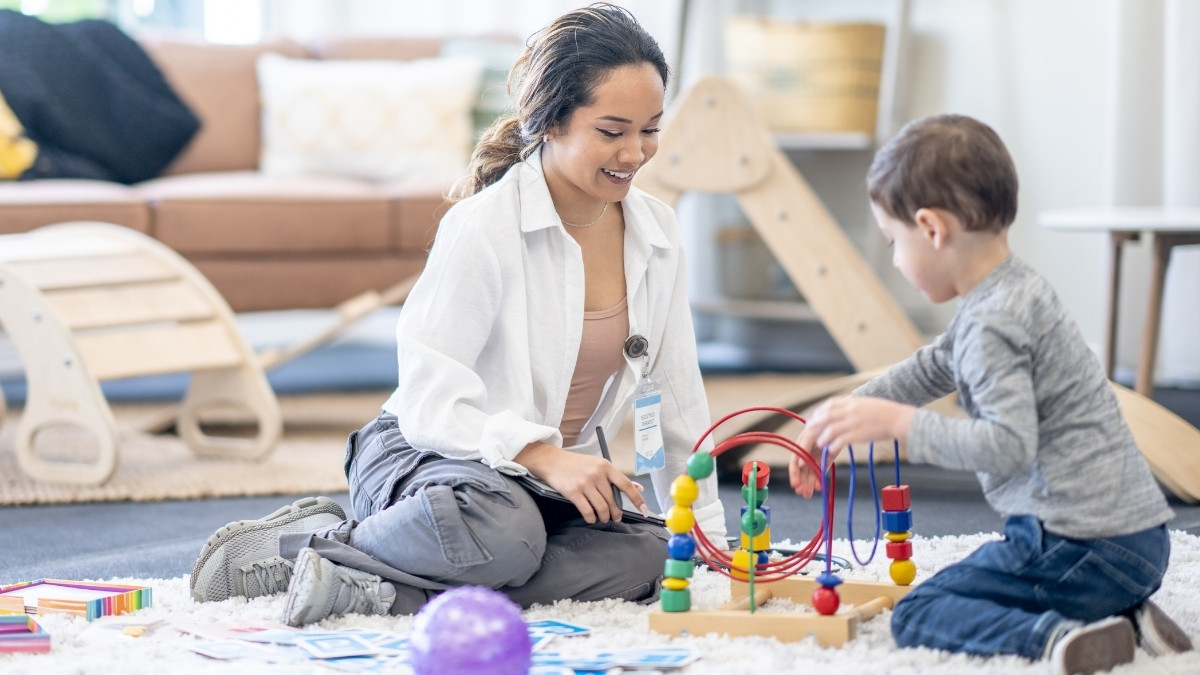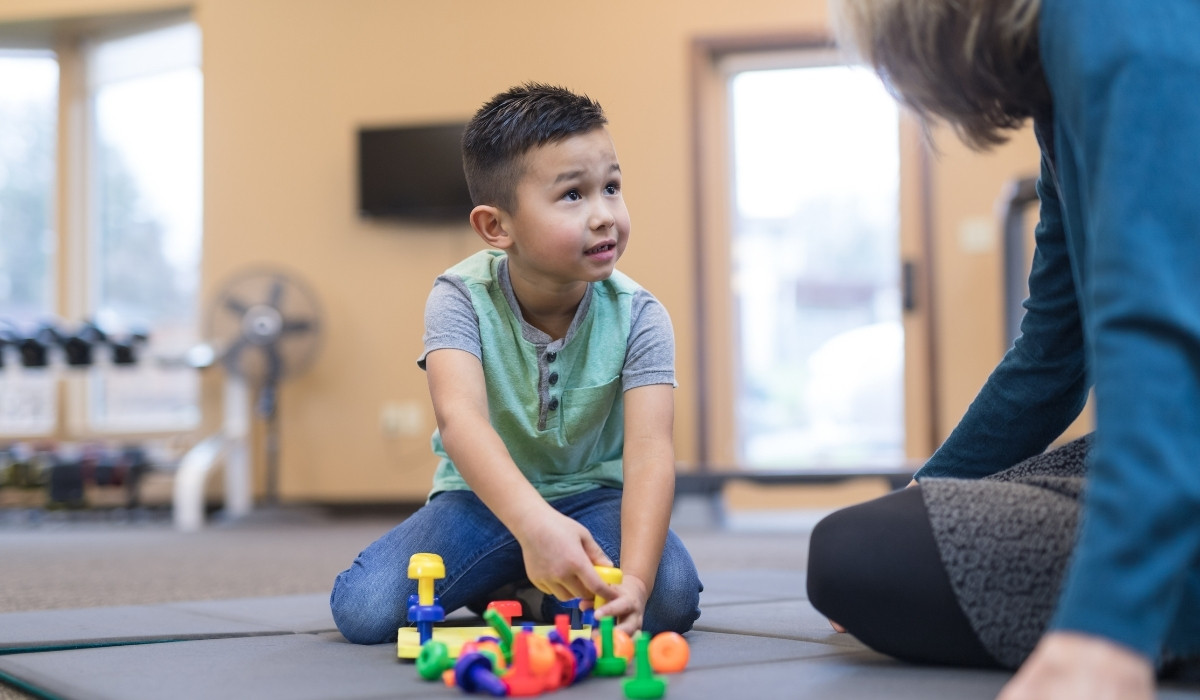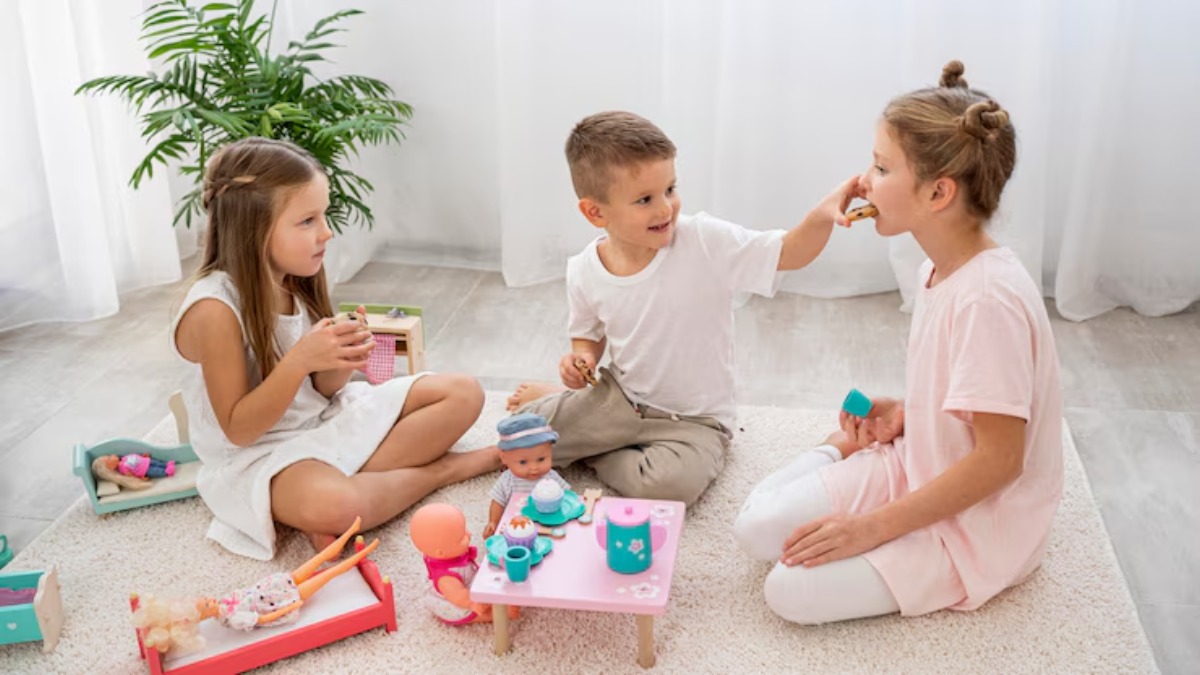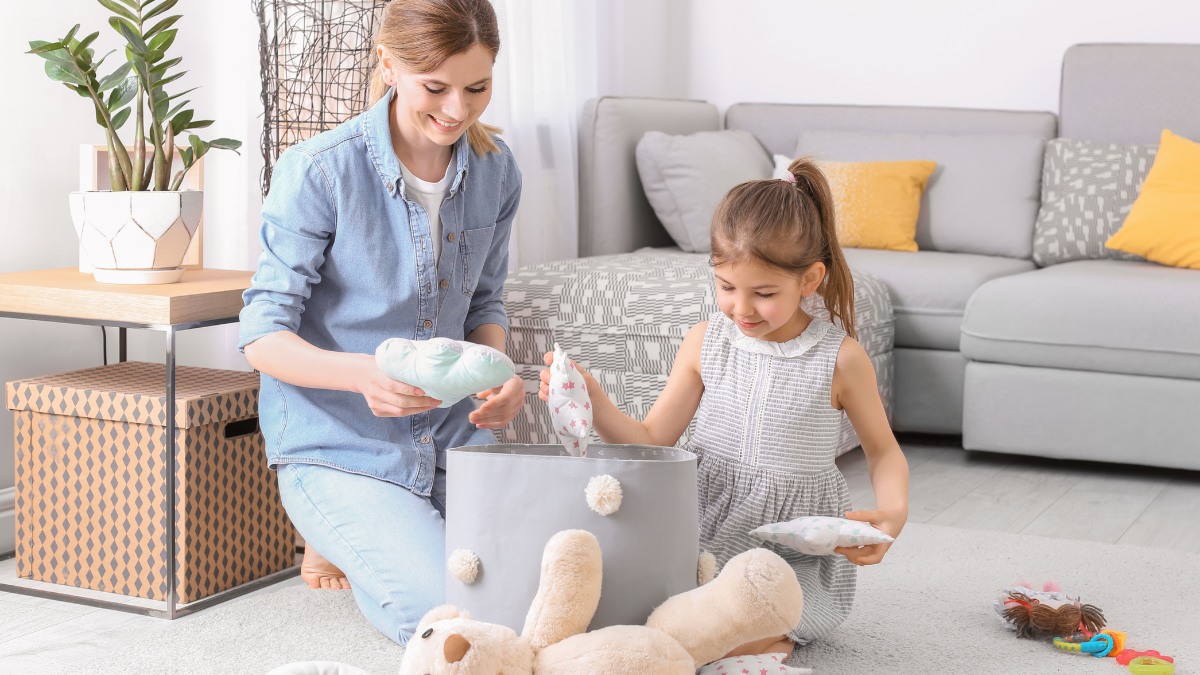9 DIR Floortime Activities for Toddlers with Speech Delays
July 29, 2025
DIR Floortime for speech/language development—engaging activities designed to boost connection, expression, and verbal growth in toddlers with delays.
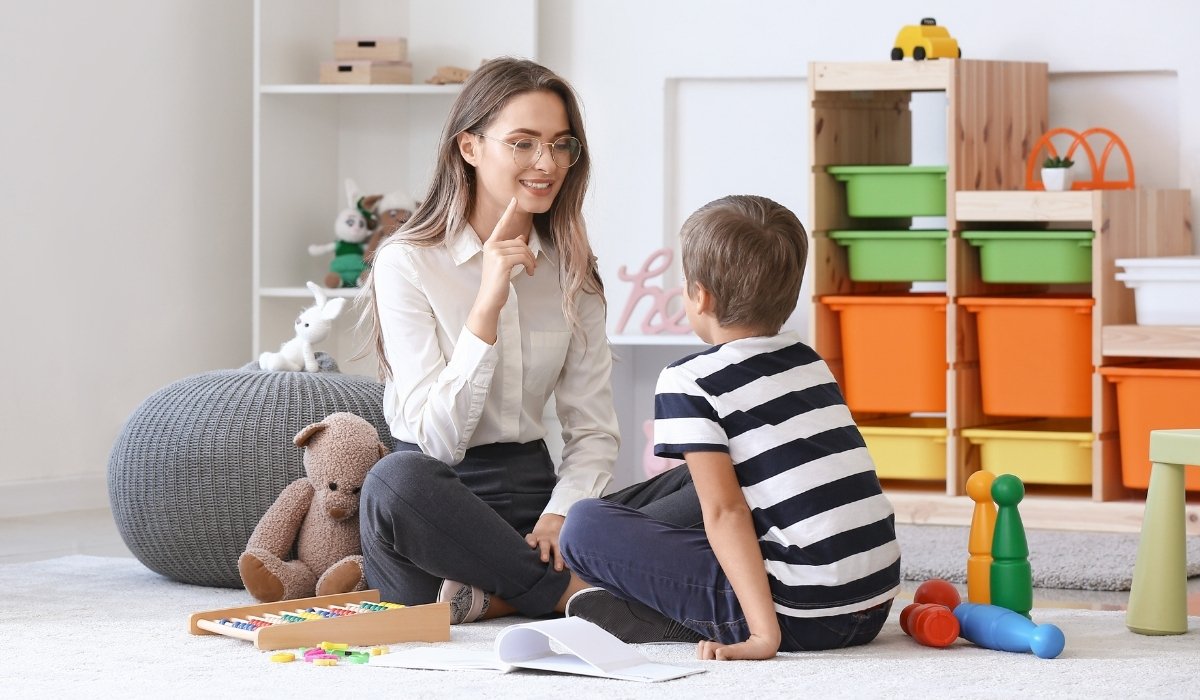
Key Points:
- DIR Floortime supports speech and language development by promoting emotional connection and intentional communication through play.
- Activities should follow the child’s lead while embedding language-rich interactions tailored to their developmental level.
- Parents can integrate DIR Floortime principles at home through simple, structured, and meaningful activities that build engagement and expressive language skills.
DIR Floortime, developed by Dr. Stanley Greenspan, is not a technique—it’s a relationship-based developmental model. The core of DIR Floortime for speech/language development lies in building relationships that support the child’s individual profile and encourage deeper levels of engagement.
Many toddlers with speech delays struggle not only with articulation or vocabulary but also with the fundamental steps of communication: shared attention, turn-taking, and intention. DIR Floortime addresses these gaps by:
- Following the child's lead while staying emotionally available.
- Creating emotionally resonant interactions that naturally promote language.
- Focusing on the "why" behind a child's behavior to support meaningful engagement.
Unlike other models that may emphasize structured repetition, DIR Floortime nurtures authentic connection through play, fostering intrinsic motivation to communicate. This child-centered approach is especially effective for children with sensory processing differences, autism, or other developmental delays that affect language acquisition.
Can DIR Floortime Support Speech and Language Development?
Yes, DIR Floortime can help support speech and language development by engaging toddlers in emotionally meaningful interactions that build foundational communication skills. Through play-based, child-led approaches, this model promotes shared attention, joint intention, and emotional signaling—all essential precursors to language. When a child feels safe, connected, and understood, they are more likely to take communicative risks and begin to express themselves.
DIR Floortime for speech/language development doesn't push verbal output directly. Instead, it meets the child where they are developmentally, using affective engagement to pull them into shared interaction—often laying the groundwork for spontaneous, functional speech over time.
When supporting speech and language development through DIR Floortime, everyday moments become opportunities for connection, communication, and growth. By intentionally engaging in playful, emotionally attuned interactions, caregivers can help children move through developmental milestones in a natural and joyful way.
The following ideas offer concrete, engaging ways to foster communication—from playful mirror games to interactive storytelling—all grounded in the principles of co-regulation, shared attention, and emotional connection.
1. Mirror Play to Encourage Shared Attention
Mirror play is a powerful way to promote awareness of self and others—both crucial for speech development. It also naturally invites facial imitation, which supports nonverbal communication and articulation foundations.
Start by sitting with your toddler in front of a large mirror. Make exaggerated facial expressions and wait for them to respond. You might:
- Stick out your tongue or puff your cheeks.
- Copy their gestures or noises and pause for a response.
- Introduce verbal labels: “Look—eyes!” or “You smiled!”
This type of reciprocal play supports joint attention—a cornerstone of language development. Over time, toddlers may begin to vocalize, gesture, or smile back as they recognize the mirrored feedback loop. For children who are not yet speaking, these early exchanges are crucial communicative milestones.
2. Pretend Play with Objects to Spark Symbolic Thought
Symbolic play is a key developmental leap that supports expressive language. It allows children to use one thing to represent another, such as pretending a block is a phone. This shift in thinking parallels how words represent ideas and actions.
Using everyday objects, encourage pretend scenarios like:
- Feeding a baby doll or giving a teddy bear a bath.
- Using a cardboard tube as a telescope or phone.
- Driving cars and making sounds like “vroom” or “beep.”
DIR Floortime for speech/language development uses this type of symbolic play to embed language within meaningful emotional contexts. Instead of scripting phrases, the focus is on shared storytelling. You can model simple language like, “The bear is hungry!” or ask, “Should we wash the duck now?”
As the toddler begins to take initiative in the pretend scenario, you’re helping them move through critical functional emotional developmental capacities (FEDCs), especially symbolic use of language and shared problem-solving.
3. Sensory Play for Regulation and Engagement
Many children with speech delays also struggle with regulation—how they manage stimulation, emotions, or transitions. Without regulation, language learning takes a backseat. DIR Floortime incorporates sensory play to support regulation while engaging in shared activities.
Try activities like:
- Playing with water—pouring, scooping, splashing.
- Rolling therapy balls back and forth.
- Tactile play with kinetic sand, shaving cream, or textured bins.
These experiences help regulate the child’s sensory system, creating a calm, alert state—ideal for receptive and expressive language learning. During sensory play, label sensations or actions: “Cold water!” or “You’re squishing the sand!” These comments, made in rhythm with the child’s engagement, build vocabulary in context.
The goal here isn’t just to expose the child to words—it’s to integrate language into a felt sense of shared experience, a critical piece in DIR Floortime for speech/language development.
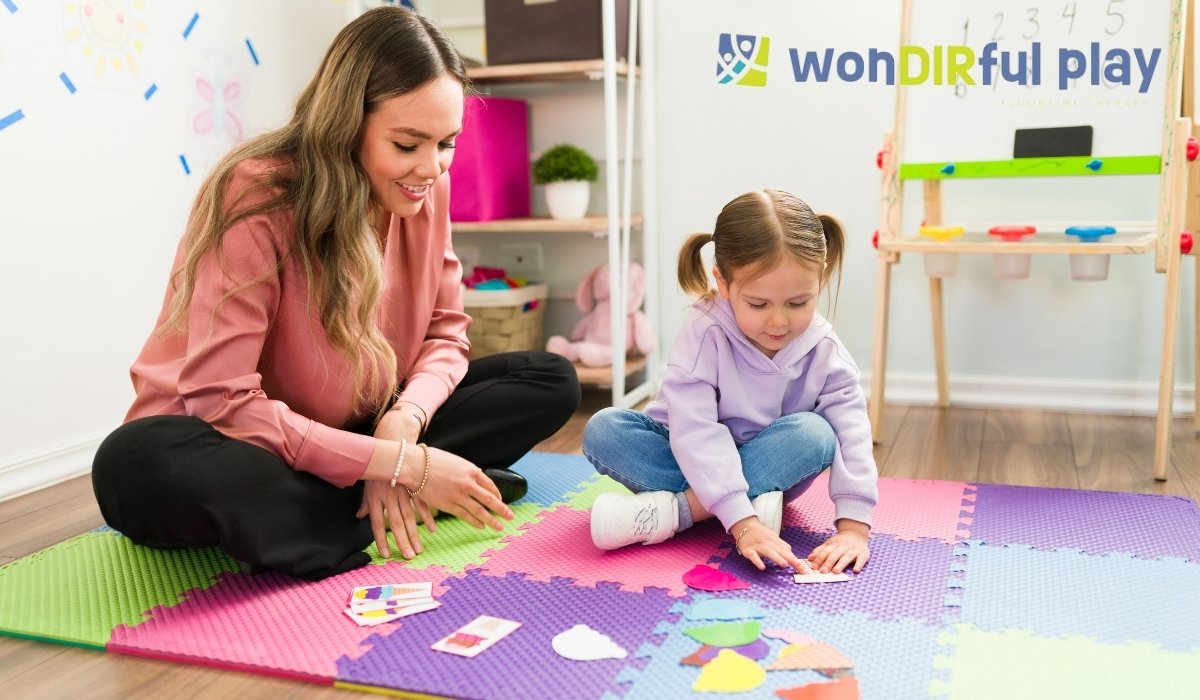
4. Songs with Movement to Support Rhythm and Sequencing
Music is inherently engaging and taps into both hemispheres of the brain, supporting memory, rhythm, and sequencing—skills that bolster speech production. Songs that incorporate movement also support motor planning, which can benefit children with speech apraxia or other motor-based delays.
Choose interactive songs like:
- “Head, Shoulders, Knees, and Toes”
- “The Wheels on the Bus”
- “If You’re Happy and You Know It”
Pause strategically to let your toddler fill in the blanks. For instance: “If you’re happy and you know it… (pause).” Even if they don’t say the word, they may clap or gesture—still a communicative act.
DIR Floortime practitioners often use music as an entry point to engage toddlers in co-regulated interaction. With repetition and affect-rich delivery, songs can become shared routines that promote turn-taking, anticipation, and eventually, vocal imitation.
5. Turn-Taking Games to Build Conversational Foundations
Turn-taking is an early skill that underpins dialogue. Before a child learns to speak in full sentences, they must first grasp the rhythm of conversation: my turn, your turn. DIR Floortime for speech/language development emphasizes co-regulation through these types of games.
Play back-and-forth activities like:
- Rolling a ball across the floor.
- Building a block tower together—one block at a time.
- Passing toys in a pretend tea party.
Narrate each action: “My turn!” “Now your turn!” This models social language in a predictable, emotionally meaningful way. Over time, toddlers internalize the rhythm of interaction and begin initiating their own communicative turns, whether through gestures, sounds, or words.
When paired with eye contact, emotional expressions, and warm responses, these interactions lay the groundwork for real conversation.
6. Gesture Imitation to Strengthen Nonverbal Communication
Language doesn’t start with words—it begins with gestures, sounds, and affective signaling. Before a toddler says “milk,” they might point to the fridge, tug at your hand, or make a humming sound. DIR Floortime helps amplify these early signs and turn them into purposeful communication.
To promote gesture use, try:
- Clapping and waiting for your child to copy.
- Blowing kisses or waving.
- Pointing to desired objects and waiting for shared gaze.
Imitating your child’s gestures and then introducing new ones helps extend their communicative range. When you say, “You clapped! Let’s clap together!” you’re validating their effort and building shared intention—a critical step in developing expressive language.
DIR Floortime for speech/language development is not just about speaking—it’s about the entire communicative system. Gestures are often the bridge between silence and speech.
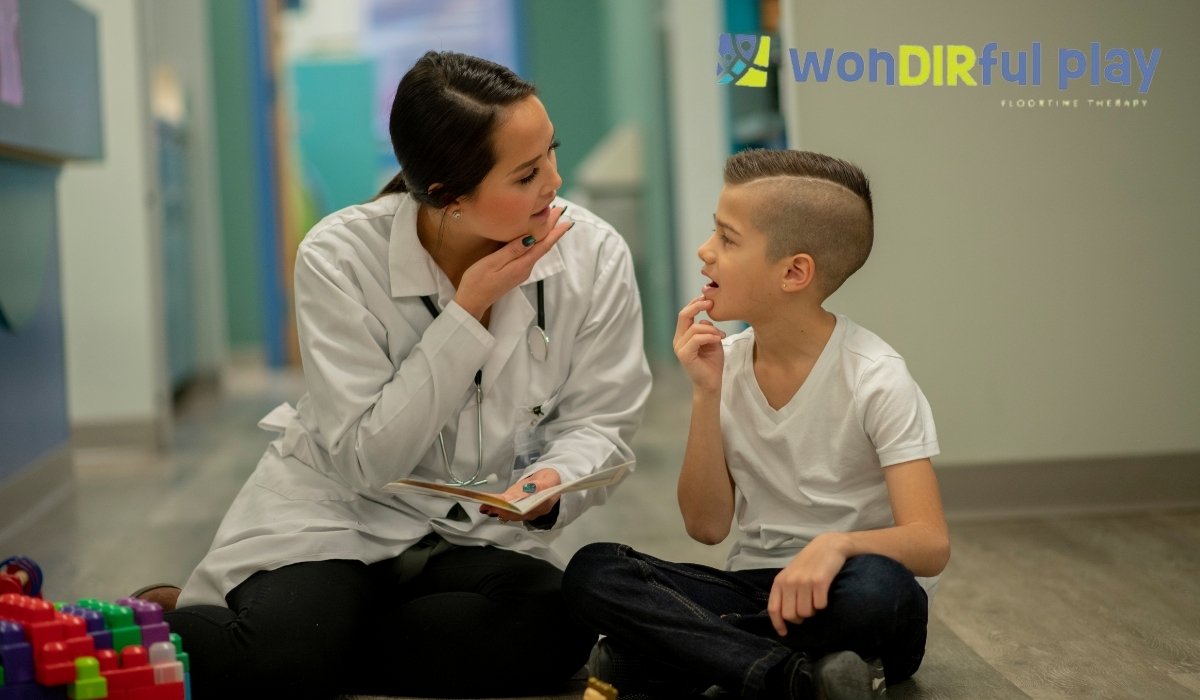
7. Emotion Labeling During Play to Build Expressive Language
Helping a toddler name their feelings is a powerful way to support expressive vocabulary. Emotional words are often some of the earliest that children use because they’re tied to internal states and real experiences.
During play, observe your toddler’s cues and reflect:
- “You look excited!” when they’re bouncing.
- “Uh-oh, you seem frustrated” if they knock something down.
- “You’re smiling—you’re happy!”
Over time, the child begins to associate labels with sensations and expressions. This not only supports emotional intelligence but also expands vocabulary in context.
One principle in DIR Floortime is the use of affect cues to deepen emotional signaling. When you mirror your child’s feelings and name them, you’re helping them organize their internal world—something foundational to language development.
8. Visual Supports and Choice Boards to Encourage Word Use
Many toddlers with speech delays benefit from visual scaffolding. DIR Floortime practitioners may incorporate pictures or gestures to offer choices and prompt expressive communication—without pressure.
You can use:
- Picture cards of snacks, toys, or emotions.
- Simple two-choice boards like “car or ball?”
- Real objects in clear bins to encourage pointing or reaching.
The key is to follow the child’s motivation. If they point to a picture of bubbles, you might model, “Bubbles? Want bubbles?” and wait for a sound or gesture.
Visual supports help reduce frustration and create more opportunities for interaction—both central goals of DIR Floortime for speech/language development.
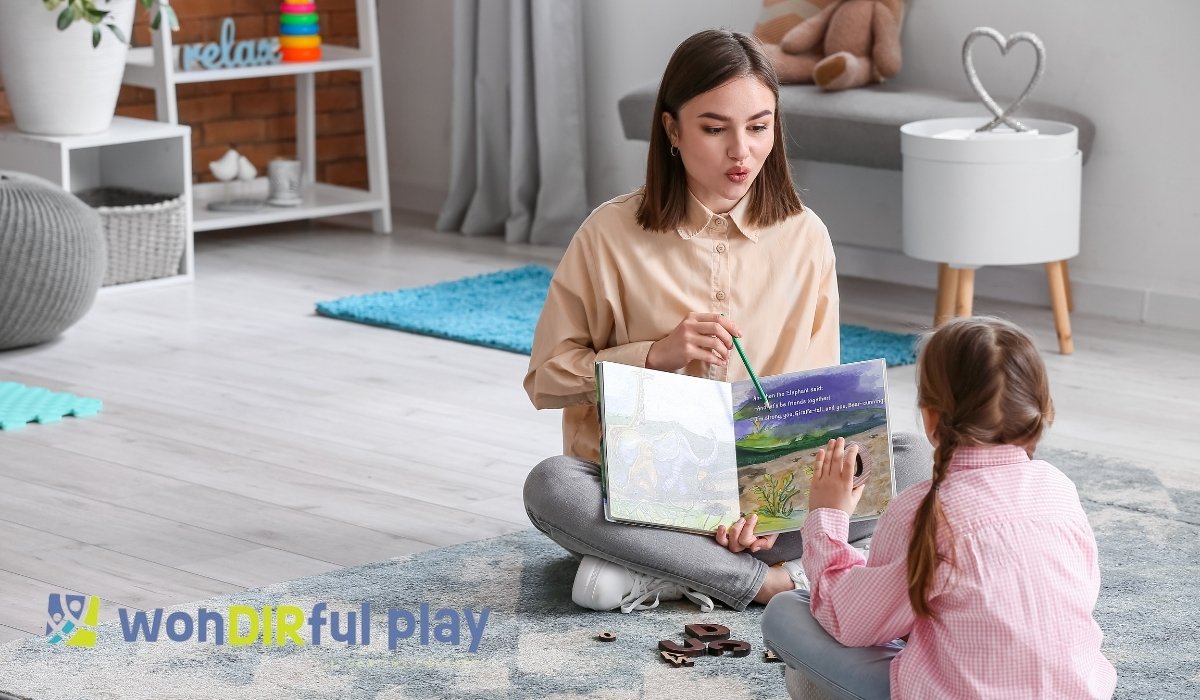
9. Shared Book Reading with Interaction and Pauses
Reading doesn’t have to be passive. In DIR Floortime, books are tools for co-regulation and symbolic thinking. Choose picture books with clear visuals, few words, and opportunities to act out or comment.
During reading, you can:
- Point to pictures and wait for eye contact.
- Ask simple “Where’s the dog?” or “What’s next?” prompts.
- Use dramatic voices or gestures to engage the child.
The goal is not to finish the book but to build interaction. Reading becomes a shared social experience, not a lecture. This shift makes books fertile ground for new vocabulary, sentence modeling, and imaginative language use.
Bring DIR Floortime Home with Personalized Support
If you’re looking to deepen your understanding of DIR Floortime for speech/language development, working with professionals can offer structured, individualized support. A consistent, developmentally appropriate approach can help your toddler progress from gestures to words, from sounds to shared stories.
Start Your DIR Floortime Journey Today with WonDIRfulPlay
At WonDIRfulPlay, we specialize in DIR Floortime services in New Jersey designed to support children with speech and language delays through meaningful, play-based interventions. Whether your child is just beginning to gesture or is working on expressive sentences, we meet them where they are and guide them forward through joyful, purposeful interaction.
Our team is committed to helping families integrate DIR Floortime for speech and language development into daily life with expert coaching and personalized plans. If you're ready to explore how DIR Floortime can support your toddler’s communication journey, contact us today and take the first step toward connection through play.
Recent articles




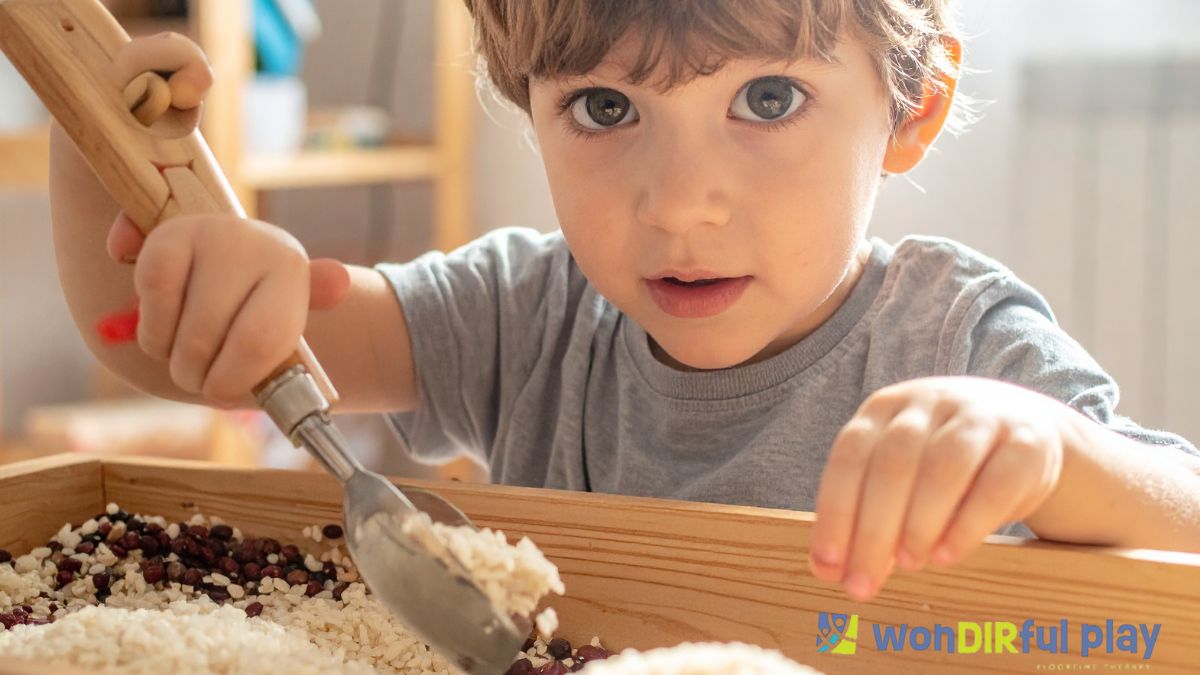
-ink.jpeg)
-ink.jpeg)
-ink.jpeg)
-ink.jpeg)
-ink.jpeg)
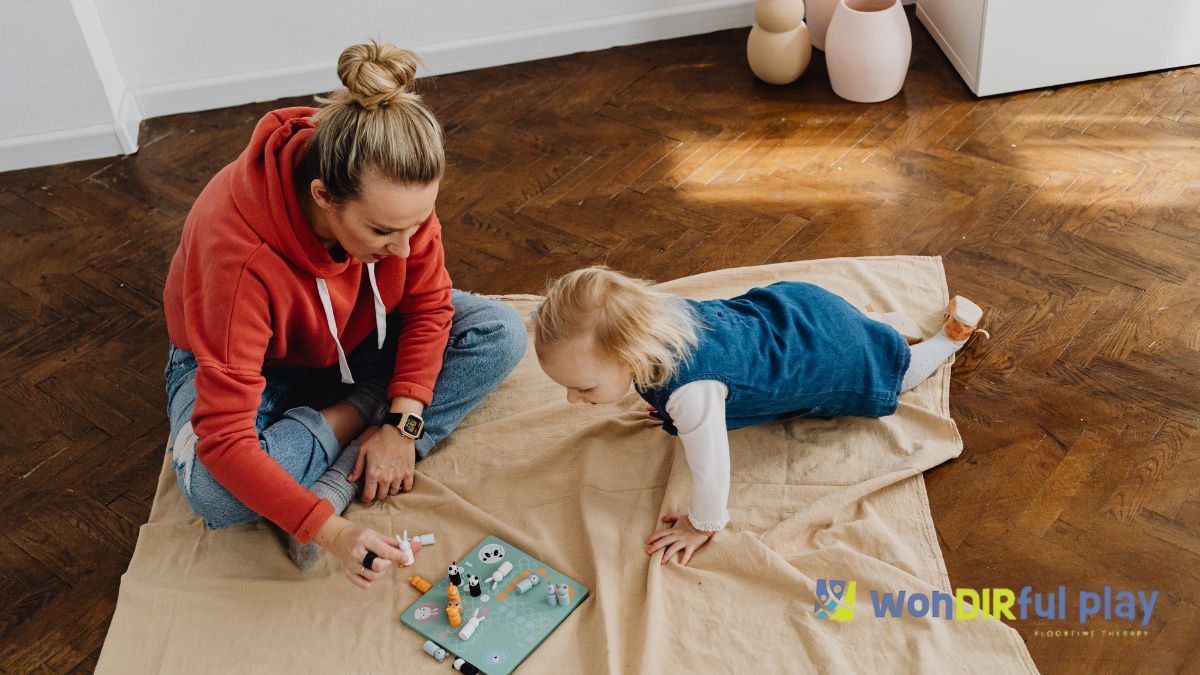
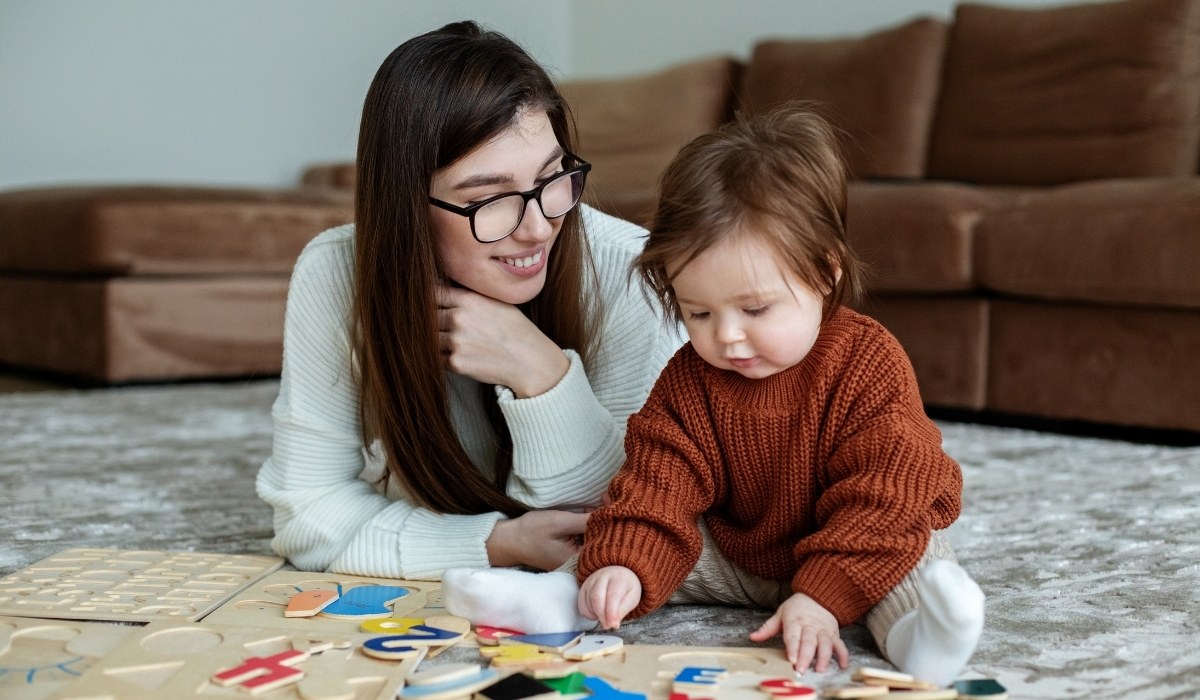
-ink.jpg)
-ink.jpeg)
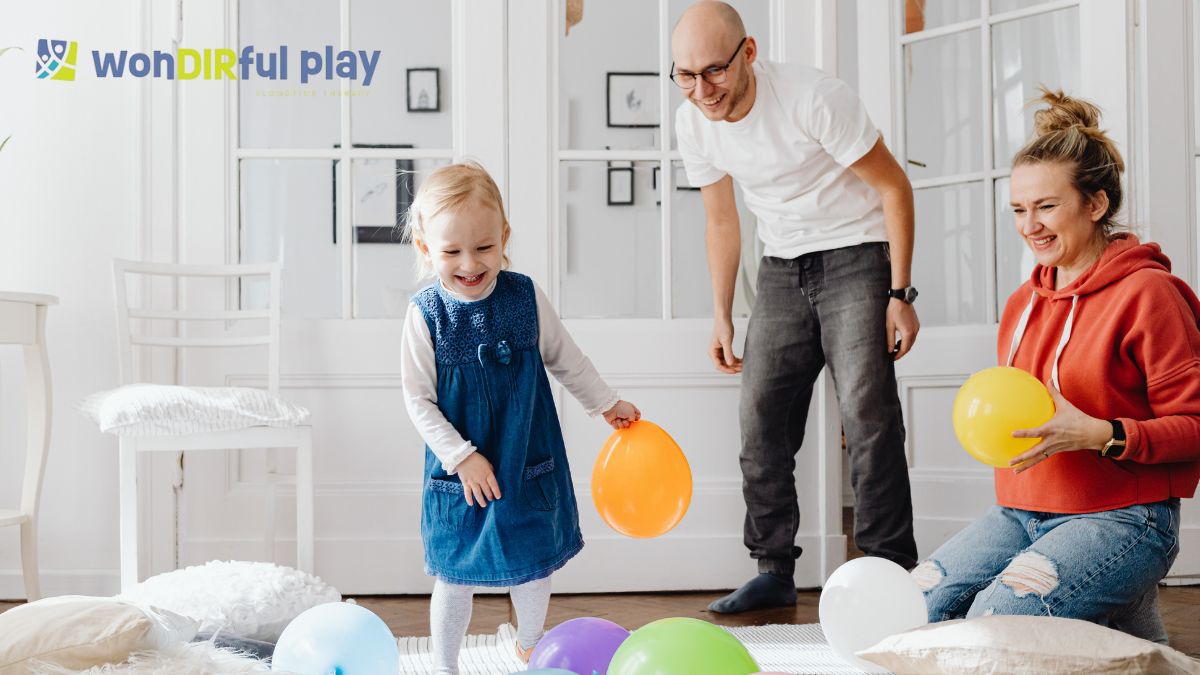
-ink.jpeg)
-ink.jpeg)
-ink.jpeg)
